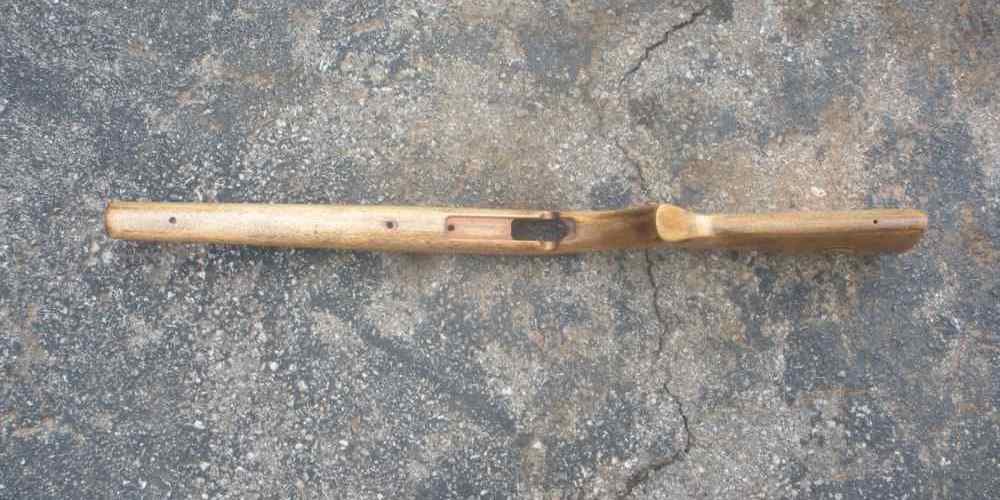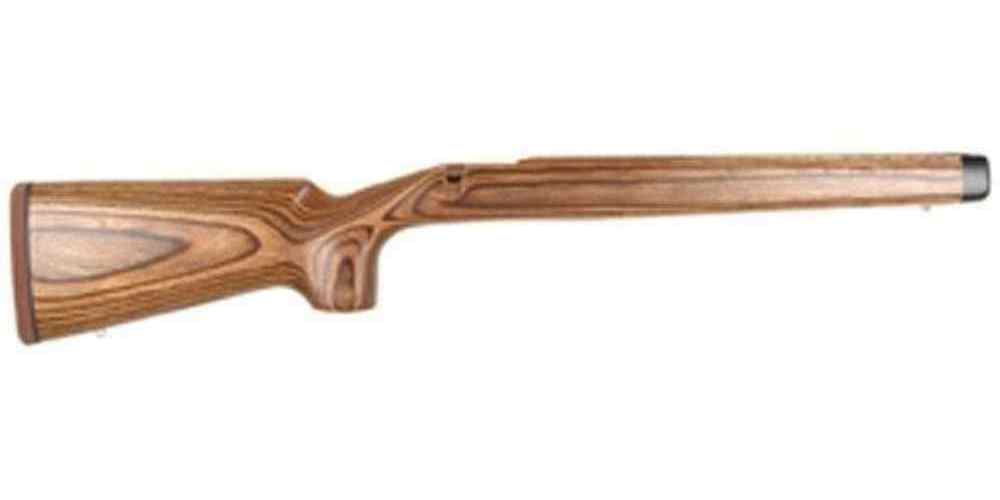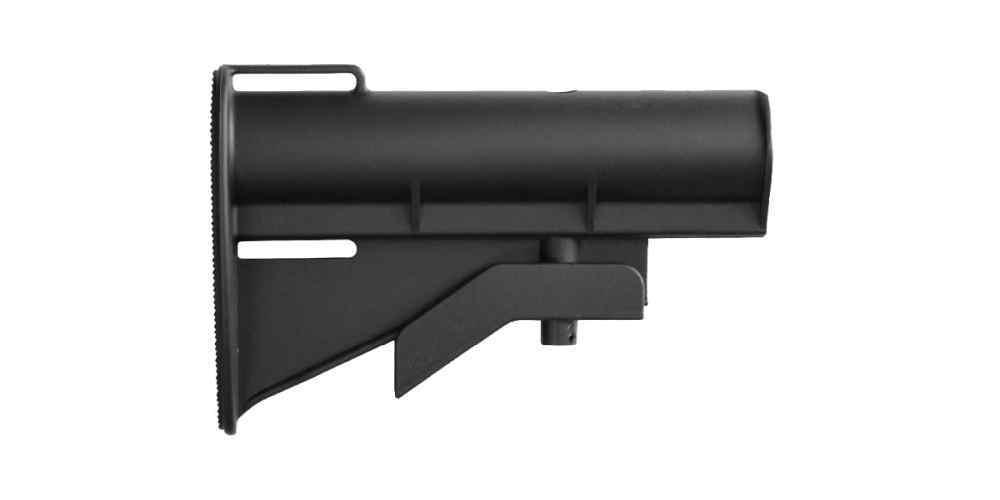“Find the perfect balance with our innovative rifle stock designs.”
Importance of Weight Distribution in Rifle Stock Design
When it comes to designing a rifle stock, one of the key considerations is finding the right balance between weight and strength. The weight of a rifle stock can have a significant impact on the overall performance of the firearm, affecting factors such as accuracy, recoil, and handling. At the same time, the stock needs to be strong enough to withstand the forces generated by firing the weapon.
Weight distribution plays a crucial role in rifle stock design. The distribution of weight along the length of the stock can affect the balance of the firearm, as well as how it feels in the shooter’s hands. A well-balanced rifle stock can help improve accuracy and reduce fatigue during extended shooting sessions.
One of the main factors to consider when designing a rifle stock is the material used. Different materials have different properties when it comes to weight and strength. For example, wood is a popular choice for rifle stocks due to its natural beauty and ability to absorb recoil. However, wood can be heavy, which may not be ideal for shooters who prefer a lighter firearm.
On the other hand, synthetic materials such as fiberglass or carbon fiber are lightweight and strong, making them a popular choice for modern rifle stocks. These materials can be molded into complex shapes, allowing for greater customization and improved ergonomics. However, synthetic materials may not have the same aesthetic appeal as wood, which is something to consider for shooters who value the traditional look of a wooden stock.
Another important consideration in rifle stock design is the shape and contour of the stock. The shape of the stock can affect how the firearm handles and how it recoils. A well-designed stock will fit comfortably in the shooter’s hands, providing a stable platform for aiming and firing. The contour of the stock can also affect how the rifle sits on the shooter’s shoulder, which can impact accuracy and recoil management.
In addition to weight distribution and material choice, the design of the stock’s internal structure is also important. The stock needs to be strong enough to withstand the forces generated by firing the weapon, while also being lightweight enough to not add unnecessary bulk to the firearm. This balance can be achieved through careful engineering and material selection.
Overall, finding the right balance between weight and strength in rifle stock design is essential for creating a firearm that is accurate, reliable, and comfortable to shoot. By considering factors such as weight distribution, material choice, and stock shape, designers can create a rifle stock that meets the needs of shooters of all skill levels. Whether you prefer the classic look of a wooden stock or the modern performance of a synthetic material, there are options available to suit your preferences and shooting style.
Strategies for Balancing Weight and Strength in Rifle Stocks
When it comes to designing a rifle stock, finding the perfect balance between weight and strength is crucial. A rifle stock that is too heavy can be cumbersome to carry and maneuver, while a stock that is too light may lack the durability needed to withstand the recoil of a powerful rifle. In this article, we will explore some strategies for achieving the ideal balance between weight and strength in rifle stock design.

One of the key factors to consider when designing a rifle stock is the material used. Wood, fiberglass, carbon fiber, and aluminum are all popular choices for rifle stock construction, each with its own advantages and disadvantages. Wood is a traditional and aesthetically pleasing option, but it can be heavy and prone to warping. Fiberglass is lightweight and durable, but it may lack the natural feel of wood. Carbon fiber is extremely strong and lightweight, but it can be expensive. Aluminum is also lightweight and strong, but it may not have the same warmth as wood or fiberglass.
To achieve the ideal balance between weight and strength, many rifle stock designers opt for a combination of materials. For example, a stock may have a carbon fiber core for strength, with a wood or fiberglass outer layer for added weight and aesthetics. This hybrid approach allows designers to take advantage of the strengths of each material while minimizing their weaknesses.
Another strategy for balancing weight and strength in rifle stock design is to carefully consider the stock’s shape and dimensions. A stock that is too bulky or oversized may add unnecessary weight, while a stock that is too thin or narrow may lack the strength needed to support the rifle. By carefully shaping the stock to distribute weight evenly and reinforce key stress points, designers can create a stock that is both lightweight and strong.
In addition to material selection and stock shape, the design of the stock’s internal structure can also play a significant role in balancing weight and strength. Reinforcing the stock with internal pillars, ribs, or other structural elements can help distribute weight and absorb recoil, while also adding strength and rigidity to the stock. By carefully engineering the internal structure of the stock, designers can create a lightweight yet durable platform for mounting the rifle action.
Finally, the finish and surface treatment of the stock can also impact its weight and strength. A heavy, thick finish may add unnecessary weight to the stock, while a thin, durable finish can protect the stock without adding bulk. Similarly, surface treatments such as checkering or stippling can add grip and texture to the stock without significantly increasing its weight.
In conclusion, achieving the ideal balance between weight and strength in rifle stock design requires careful consideration of material selection, stock shape, internal structure, and finish. By combining the strengths of different materials, shaping the stock for optimal weight distribution, reinforcing key stress points, and carefully finishing the stock, designers can create a rifle stock that is both lightweight and strong. With the right balance of weight and strength, shooters can enjoy improved accuracy, comfort, and durability in their rifles.
Impact of Material Selection on Weight and Strength in Rifle Stock Design
When it comes to designing a rifle stock, one of the key considerations is finding the right balance between weight and strength. The material selection plays a crucial role in determining the overall performance of the rifle stock. In this article, we will explore the impact of material selection on weight and strength in rifle stock design.
The weight of a rifle stock can have a significant impact on the overall handling and accuracy of the firearm. A heavier stock can help to reduce recoil and improve stability, making it easier for the shooter to maintain control and accuracy. However, a heavy stock can also be cumbersome and tiring to carry for long periods of time, especially in hunting or competitive shooting situations.
On the other hand, a lighter stock can be more comfortable to carry and maneuver, making it ideal for situations where mobility is key. However, a lighter stock may not provide as much stability or recoil reduction as a heavier stock, which can affect accuracy and precision.
When selecting materials for a rifle stock, it is important to consider the trade-offs between weight and strength. Some materials, such as wood, are known for their strength and durability but can be heavier than other options. Other materials, such as carbon fiber or fiberglass, are lightweight and strong but may not offer the same level of durability as wood.
Carbon fiber is a popular choice for rifle stock design due to its high strength-to-weight ratio. Carbon fiber stocks are lightweight, yet incredibly strong, making them ideal for precision shooting applications. The material is also resistant to temperature changes and moisture, making it a durable option for outdoor use.
Fiberglass is another lightweight and strong material that is commonly used in rifle stock design. Fiberglass stocks are known for their durability and resistance to warping or cracking, making them a reliable choice for long-term use. The material can also be molded into complex shapes, allowing for custom designs and ergonomic features.
In contrast, wood is a traditional material that has been used for rifle stocks for centuries. Wood stocks are known for their natural beauty and classic look, making them a popular choice among traditional shooters. Wood stocks can also provide excellent stability and recoil absorption, making them a reliable option for precision shooting.
When designing a rifle stock, it is important to consider the specific requirements of the shooter and the intended use of the firearm. For precision shooting applications, a lightweight and strong material like carbon fiber or fiberglass may be the best choice. For traditional or hunting applications, a durable and stable material like wood may be more suitable.
In conclusion, the material selection plays a crucial role in determining the weight and strength of a rifle stock. By carefully considering the trade-offs between weight and strength, shooters can select a material that meets their specific needs and preferences. Whether you prefer the lightweight performance of carbon fiber, the durability of fiberglass, or the classic look of wood, there are a variety of options available to suit your individual shooting style.
Ergonomic Considerations for Balancing Weight and Strength in Rifle Stocks
When it comes to designing a rifle stock, there are a few key considerations that need to be taken into account. One of the most important factors to consider is the balance between weight and strength. A rifle stock that is too heavy can be cumbersome to carry and can throw off the balance of the rifle, making it difficult to aim accurately. On the other hand, a stock that is too light may not provide enough stability and support for the shooter, leading to decreased accuracy and control.
Finding the right balance between weight and strength is crucial for creating a rifle stock that is both comfortable to use and effective in improving shooting performance. One way to achieve this balance is by carefully selecting the materials used in the construction of the stock. Different materials have different properties when it comes to weight and strength, so choosing the right combination is key.
For example, synthetic materials such as fiberglass and carbon fiber are lightweight and strong, making them ideal choices for rifle stocks. These materials are also resistant to warping and moisture, ensuring that the stock will maintain its shape and performance over time. However, synthetic materials can be more expensive than traditional wood stocks, so cost is another factor to consider when choosing materials for a rifle stock.
Wood is another popular choice for rifle stocks, as it is durable, aesthetically pleasing, and provides a natural feel that many shooters prefer. However, wood stocks can be heavier than synthetic stocks, so careful consideration must be given to the type of wood used and the design of the stock to ensure that the weight is balanced properly.
In addition to material selection, the design of the rifle stock itself plays a crucial role in balancing weight and strength. The shape and contour of the stock can affect how it feels in the shooter’s hands and how well it absorbs recoil. A well-designed stock will distribute weight evenly and provide a comfortable grip for the shooter, reducing fatigue and improving accuracy.
Another important consideration when designing a rifle stock is the length of pull, which is the distance from the trigger to the butt of the stock. A stock with the correct length of pull will allow the shooter to maintain a proper shooting position and achieve consistent accuracy. Adjustable stocks are available that allow shooters to customize the length of pull to fit their individual preferences, making them a versatile option for shooters of all sizes.
Overall, balancing weight and strength in rifle stock design is a complex process that requires careful consideration of materials, design, and ergonomics. By choosing the right materials, designing a stock that distributes weight evenly, and ensuring the correct length of pull, shooters can create a rifle stock that is both comfortable to use and effective in improving shooting performance. With the right balance, shooters can achieve greater accuracy, control, and confidence in their shooting abilities.
Case Studies of Successful Rifle Stock Designs Balancing Weight and Strength
When it comes to designing a rifle stock, finding the perfect balance between weight and strength is crucial. A rifle stock that is too heavy can be cumbersome to carry and maneuver, while a stock that is too light may lack the durability needed to withstand the recoil of a powerful rifle. In this article, we will explore some case studies of successful rifle stock designs that have effectively balanced weight and strength to provide shooters with a reliable and comfortable shooting experience.
One example of a successful rifle stock design that strikes a balance between weight and strength is the McMillan A5 stock. The McMillan A5 is a popular choice among precision rifle shooters for its combination of rigidity and lightweight construction. Made from fiberglass or carbon fiber, the A5 stock is known for its durability and resistance to warping or bending under heavy recoil. Despite its strength, the A5 stock is also relatively lightweight, making it easy to carry and handle in the field.
Another example of a well-balanced rifle stock design is the Manners T4A stock. The Manners T4A is a synthetic stock that is favored by competitive shooters for its combination of strength and weight savings. Constructed from a composite material, the T4A stock is designed to be both rigid and lightweight, providing shooters with a stable platform for precision shooting without adding unnecessary bulk to the rifle. The T4A stock also features a comfortable grip and adjustable cheek piece, allowing shooters to customize the fit of the stock to their individual preferences.
One more example of a successful rifle stock design that effectively balances weight and strength is the Bell and Carlson Medalist stock. The Bell and Carlson Medalist stock is a popular choice among hunters and target shooters for its combination of durability and lightweight construction. Made from a composite material, the Medalist stock is designed to withstand the rigors of hunting and shooting sports while also being easy to carry and handle in the field. The Medalist stock features a textured surface for improved grip and a recoil pad to help absorb the shock of recoil, making it a comfortable and reliable option for shooters of all skill levels.
In conclusion, finding the right balance between weight and strength is essential when designing a rifle stock. By carefully considering the materials and construction of the stock, designers can create a product that is both durable and lightweight, providing shooters with a comfortable and reliable shooting experience. The case studies mentioned in this article demonstrate how successful rifle stock designs have effectively balanced weight and strength to meet the needs of shooters in various disciplines. Whether you are a precision rifle shooter, competitive marksman, or avid hunter, choosing a rifle stock that strikes the right balance between weight and strength is key to achieving success in the field.






